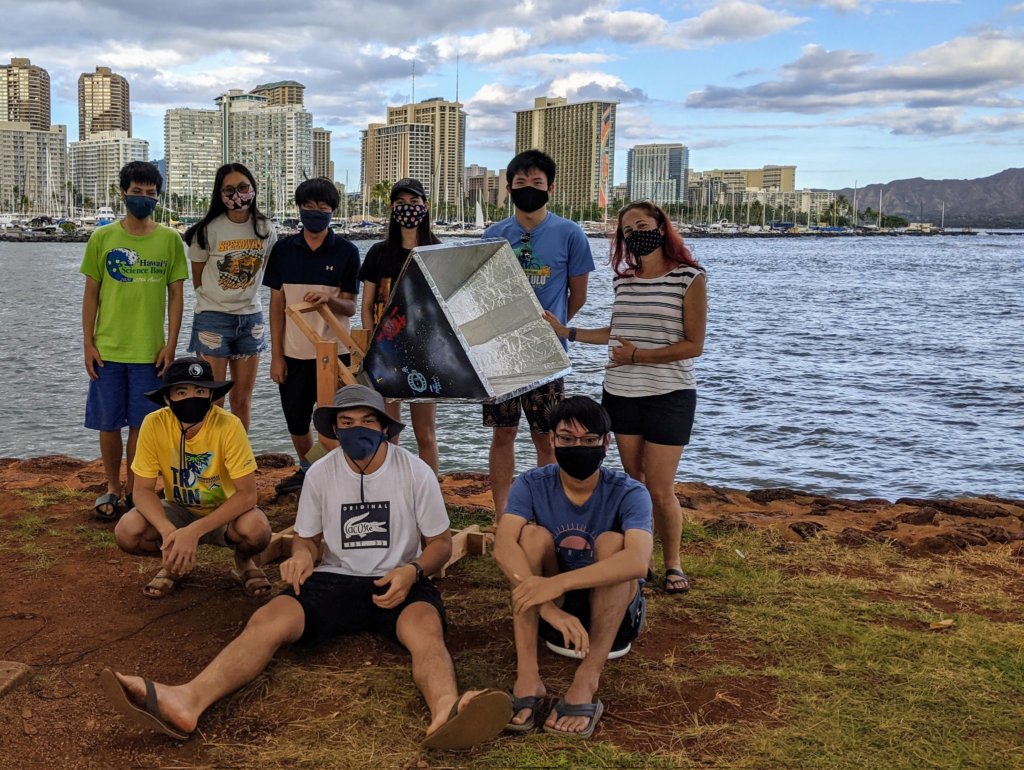Rising seniors and recent graduates embarked on a unique project this summer to build a radio telescope to study the galaxy. The students involvement was an extension of a project led by Academy science faculty member Tiffany Coke in partnership with University of Hawai‘i’s Institute for Astronomy and Professor Jonathan Williams, a Punahou parent.
The project was a pilot to build a telescope and delve into astrophysics. Unlike a common backyard telescope, a radio telescope detects radio waves rather than visible light. Twelve students constructed the telescope in the D. Kenneth Richardson ’48 Learning Lab using an open-source design, common hardware store materials and an electronic data collector.
The telescope features a large funnel that channels radio waves into a paint thinner can, which amplifies the signal that’s then picked up by a digitizer, which graphs the signals onto computer software. Students deployed the telescope on campus and other areas of the Island to target various parts of the galaxy.
The signal students were looking for is a wavelength known as the 21-centimeter line of hydrogen gas, used to detect the invisible hydrogen clouds that exist between stars. Students used these signals, and their subtle variations, to detect the speed and direction of hydrogen clouds and also their mass. This information can be used to create a map of the galaxy and better understand what’s happening, especially with dark matter, which remains a mystery to scientists.
Scientists are exploring the role dark matter plays in holding the galaxy together, which is why studying hydrogen with radio telescopes is so important. The velocity and mass of the hydrogen clouds, along with other celestial bodies, indicates that the galaxy is spinning so quickly you’d expect stars to be flung off into space. “It would be like if I were spinning so fast with my arms outstretched that my fingers came off,” Coke explained. So the presence of dark matter in the galaxy could be a reason why that doesn’t occur.
The project offered students an opportunity to learn how math, science and engineering converge to make discoveries about our galaxy. “This was a pretty intensive astrophysics project that involved coding, math, science and building something with your hands,” Coke said. “Students found ways to improve on the telescope design and pushed to make it more accurate. It was fun for them.”
The project was an extension of Coke’s Academy Physics Explorations course, which was new this past school year. All projects were created and led by students, including a water balloon sling shot. “It really developed an atmosphere of inquiry and ‘I can do this,’” she said. “They are under impression they can do anything now, and they can, which is why when I told them I was going to be building a radio telescope this summer, they wanted to be a part of it.”
The project will continue through the summer and school year, laying the possibility for future Academy classes.

Photos by Academy faculty Tiffany Coke

